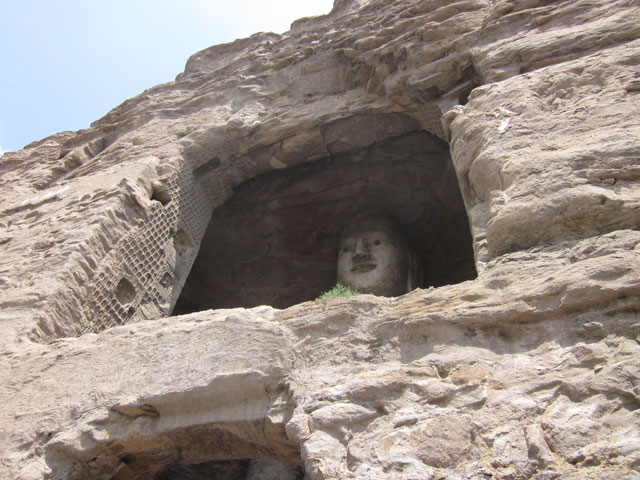 About 4 hours north-west of Beijing lies a small mining city called Datong. It’s a relatively unremarkable city, with most tourists not even going into the city, preferring hotels around the train station, but it is well worth a visit. Why? For the Yungang Grottoes.
About 4 hours north-west of Beijing lies a small mining city called Datong. It’s a relatively unremarkable city, with most tourists not even going into the city, preferring hotels around the train station, but it is well worth a visit. Why? For the Yungang Grottoes.
The Yungang Grottoes is a collection of Buddhist carvings in a rocky mountainous area about 16 km out of town. China has three similar sites (the carvings at Longmen and Mogao) but Yungang is considered the grandest and best preserved. It is also a UNESCO world heritage site.
I always imagine these carvings are done over a period of several hundred years as wandering monks came and went. I figured, some come for a decade or so, create a few amazing statues and then wander off into the world spreading their message of peace and harmony. I imagined several dozen monks at a time, spread out by themselves or in small groups, working day in and day out in silence, with only the sound of a chisel and falling rock to fill their ears.
And in some cases that is true (Longmen Grotto was built over hundreds of years) but not in Yungang. In fact, most of the carvings in Yungang were done in a 60 year period, with over 40,000 workers at the request of the emperor.
A little over 1,500 years ago, non-Chinese northern Turks invaded and took control of northern China, making Datong their capital city. (They are referred to as the Wei Dynasty.) The local people were Buddhists and the new dynasty decided to embrace the religion (perhaps to win the hearts and minds of the locals?) and monks were given considerable power and influence in the court.
The emperor fully supported the carvings of the cave, and in return, there are 5 Buddha statues that actually represent 5 emperors done up in a Buddha style. (In a likely attempt to win further influence the monks actually said the emperors were a Buddha reborn. Not a bad trick.)
The Yungang Grottoes are not the oldest of the Buddhist carvings (that would be the Mogao caves) but they were the most multi-cultural. The style was influenced by India, Afghanistan and Iran and the Buddhas have broader shoulders, thicker lips and other features of different ethnic groups in the area at the time. Some of the architecture was influenced by India as well as some Greco-Roman design. Later the Longmen Grottoes (which was also supported by the Wei emperors but built much slower) was built in more of a traditional strictly-Chinese style.
The site was also brightly painted, and every wall and Buddha was colored. Nowadays, much of the color has disappeared, but inside some of the caves, you can still see traces of it. (I doubt it is original, but I appreciate that they don’t re-paint the interiors every year to keep a fresh shiny coat on it. I prefer the faded, crumbling patches of color throughout.)
The reason I preferred the Yungang caves, over the Longmen ones, is the fact that there were actually a few caves. In both sites the monks had to hollow out caves into the sides of the mountains to carve their statues, and in Yungang, you can actually go into them, and scamper about. And in pure Chinese fashion there are very few gates and fences keeping you from touching or climbing the priceless, ancient statues.
Another benefit these grottoes had was their lack of accessibility. Of course, over the centuries there were many problems, political and otherwise, that destroyed some of the sites treasures. But thanks to a slightly remote location, the site was spared the worst during the cultural revolution and suffered only minimal damage. Also, looting was not as big a problem here as at the other sites. The largest problem is natural erosion and you can see evidence of strange wispy carvings slowly disappearing back to stone. (This is still a problem as Datong is a mining town, and therefore has a high level of pollution.)
The final stunning feature of the site is a giant, seated Buddha clearly carved on the side of the mountain. In the past, this was a significant area of worship, but now that has largely fallen away. The only statue you can kneel and pray to, and burn incense for, is the giant, final statue. And what kind of offering do you give a 30-plus foot Buddha? Why a giant stick of incense of course!
Datong is not exactly on the tourist track, and English resources and hotels are hard to come by here, but it is a trip well worth the effort, and one you should make if you come to Beijing.







Leave a Reply